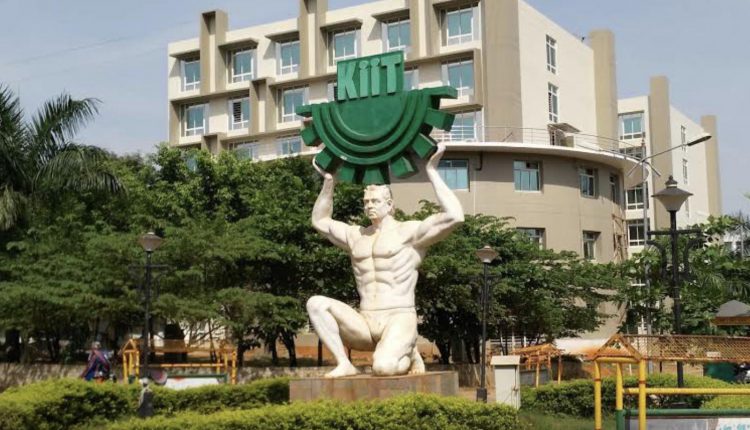Major Publications on Covid-19 in National Journals by Dept. of Pulmonary Medicine of KIMS
The Dept. of Pulmonary Medicine of Kalinga Institute of Medical Sciences (KISS) has been a pillar in COVID management at KIMS Govt. COVID Hospital for more than one year. The faculty led by Dr. C. Mohan Rao and Dr. Saswat Subhankar with the valuable guidance of Dr. Nipa Singh and Prof. Sidhartha Das, in collaboration with Regional Medical Research Centre (RMRC), were successful in their publication on COVID for the 1st time in Eastern India.
The topic titled “Clinical, Radiological and Laboratory Profile of COVID-19 Patients Admitted to a Dedicated COVID-19 Hospital in Odisha” was published in Journal of Evidence based Medicine and Healthcare in April 2021. doi: 10.18410/jebmh/2021/191.
Its abstract is as follows:
Background:
The Covid-19 pandemic caused by severe acute respiratory syndrome Coronavirus 2 (SARS-CoV-2) is a public health challenge being faced by the world currently. In the state of Odisha, in the eastern part of India, Kalinga Institute of Medical Sciences (KIMS), set up the first dedicated COVID Hospital of the state. This study intends to chronicle the clinical profile, radiological presentations, laboratory findings, and clinical outcome of patients admitted to the KIMS COVID hospital. Methods: A retrospective analysis of the clinical and laboratory data of patients admitted with Covid-19 diagnosis at the dedicated Covid-19 hospital from 5th April 2020 to 4th June 2020 was done. Results: A total number of 272 Covid-19 cases were included in this study. Majority of the patients were males (83.57 %) and most of the patients (79.04 %) were asymptomatic. The mortality rate was 1.9 %. Fever (18.38 %), cough (17.27 %), dyspnoea (16.91 %) and myalgia (14.7 %) were the major symptoms observed. Severity was mild in 78.94 % cases. Delayed viral clearance was seen in 13 % cases. The typical features of novel SARS-CoV-2 infection were seen in 12 – 13 % cases in computed tomography (CT) images of thorax. Conclusion: Covid-19 may have a delayed viral clearance beyond two weeks. Discordance between CT images and the clinical condition may also be observed.
Similarly, Dr. C. Mohan Rao, Dr Nipa Singh, Dr. Saurabh Gupta, Dr. Sunil Kumar Jena, Dr. Sibabrat Patnaik and Dr. Sidhartha Das had authored an original article on Critical COVID cases titled, “Clinical Course and Outcome of Critically Ill Clinical COVID-19 Pneumonia or Severe Acute Respiratory Illness” in prestigious Journal of Association of Physicians of India that was published on 1st May, 2021.
Its abstract is as follows:
Background:
COVID-19 continues to be a public health challenge in India. In a small proportion of cases, the disease manifests as severe acute respiratory illness (SARI) which can progress to acute respiratory distress syndrome (ARDS) and multi-organ failure. Objective: To describe the clinical course and outcome of critically ill patients who were provisionally diagnosed as COVID-19 pneumonia. Methodology: It was a retrospective observational study of 42 critically ill COVID-19 cases out of 395 admitted in COVID Hospital KIMS, Bhubaneswar, Odisha between 5th April and 31st May, 2020. Results: Majority of the patients were male (67%). Fever was more frequent as a symptom (87.5%) in non-survivors than survivors (76.47%). The time to admission to the critical care unit (CCU) from onset of symptoms was 5 days. Both serum creatinine (2.39 ± 2.8 mg/dl) and CRP (56.74 mg/L) were found to be higher in case of non-survivors. Among the non-survivors, all required mechanical ventilation and 75% of cases suffered from ARDS. In survivors with co-morbidities, raised levels of Trop I, NT proBNP and D-dimer did not have any adverse outcome. Conclusion: Mortality (19.05%) was observed in patients with severe disease requiring mechanical ventilation, but surprisingly patients survived despite cardiac injury.
These are the first-of-their-kind studies from Eastern India. The Pulmonary Medicine faculty and its team from Microbiology, Critical care, Paediatrics, owe the achievements to excellent academic ambience. They acknowledge the cooperation from Mrs. Subhadra Priyadarshini of Research and Publication Cell, KIMS.


